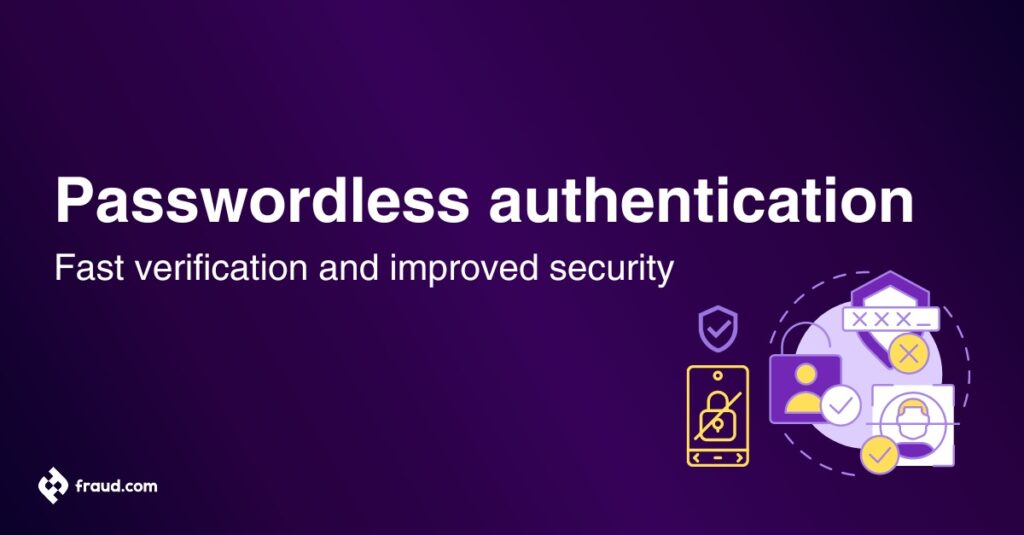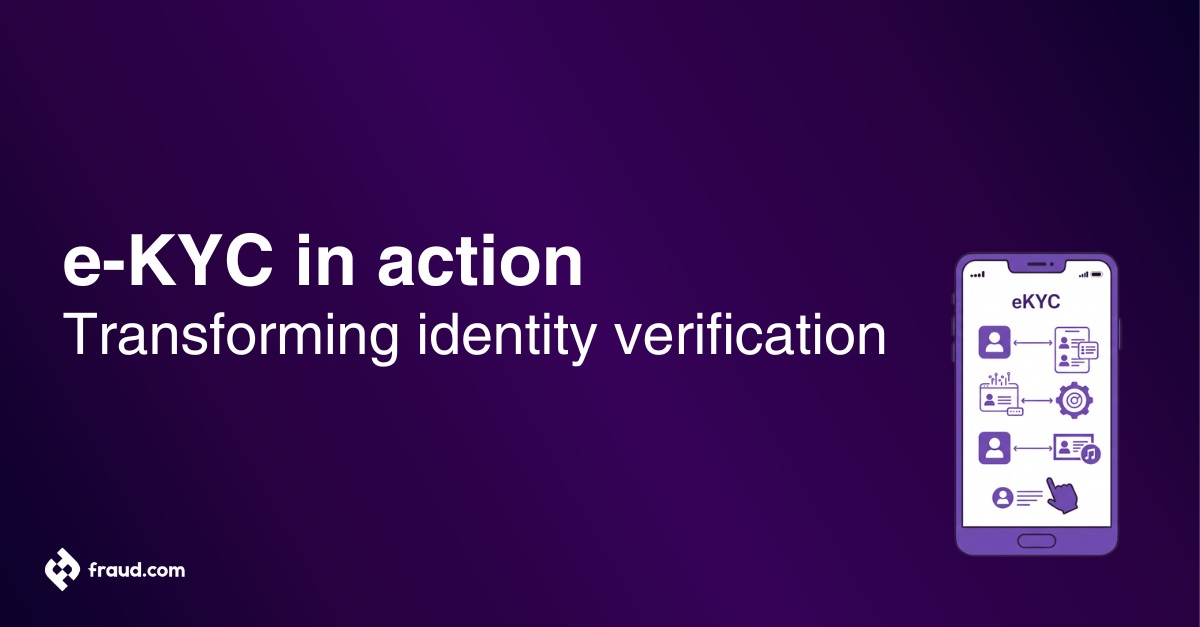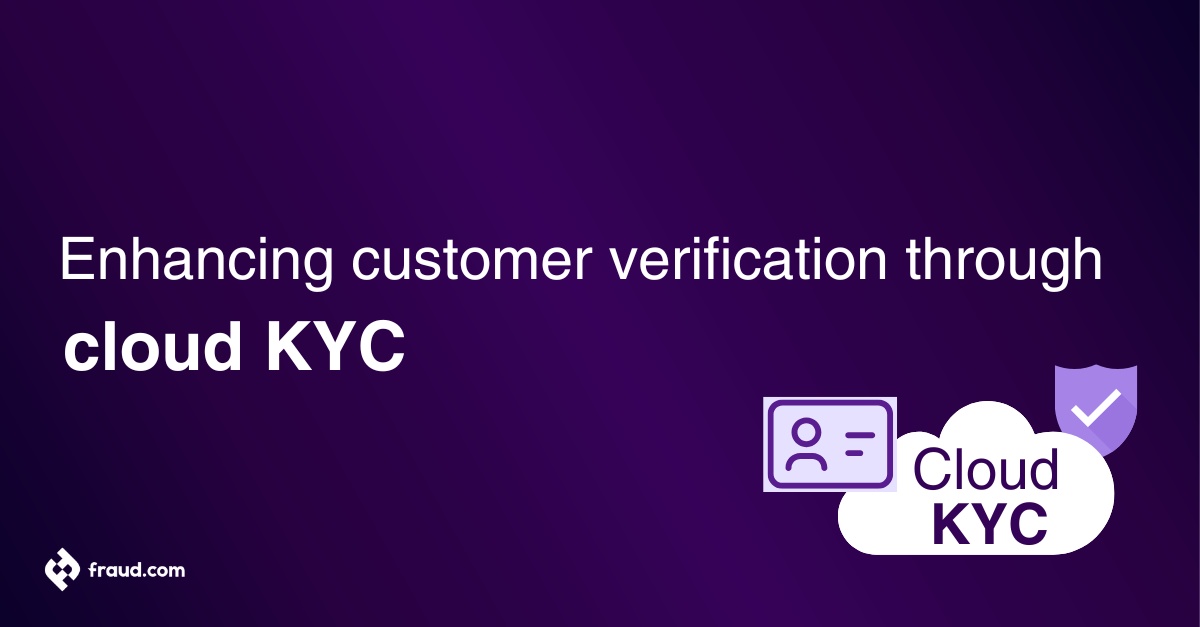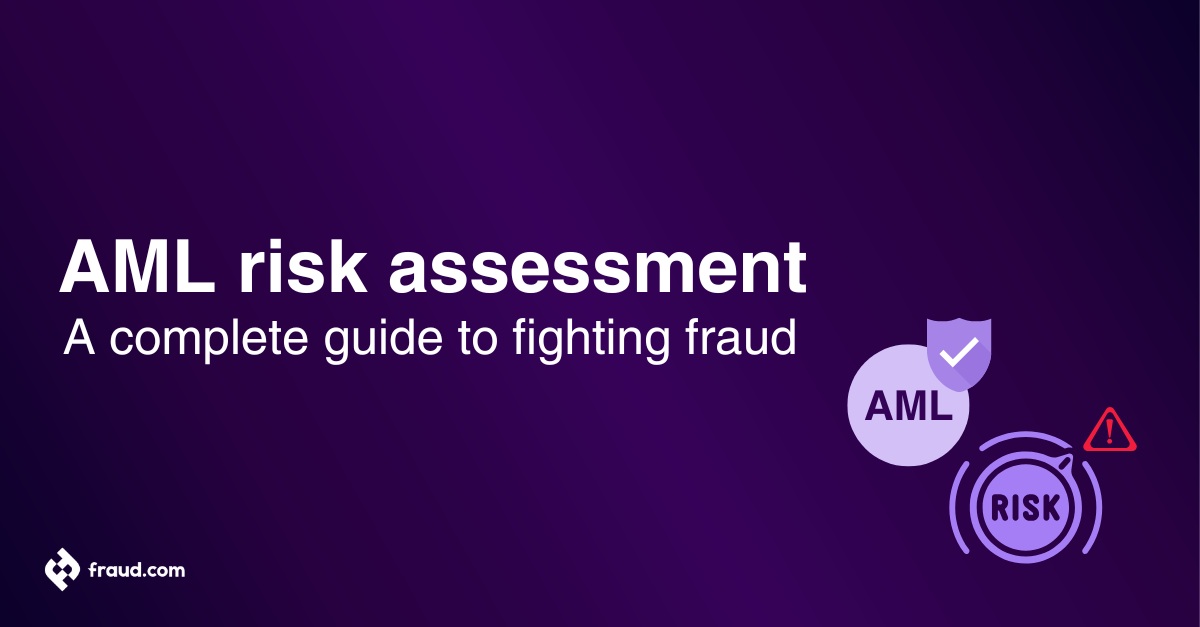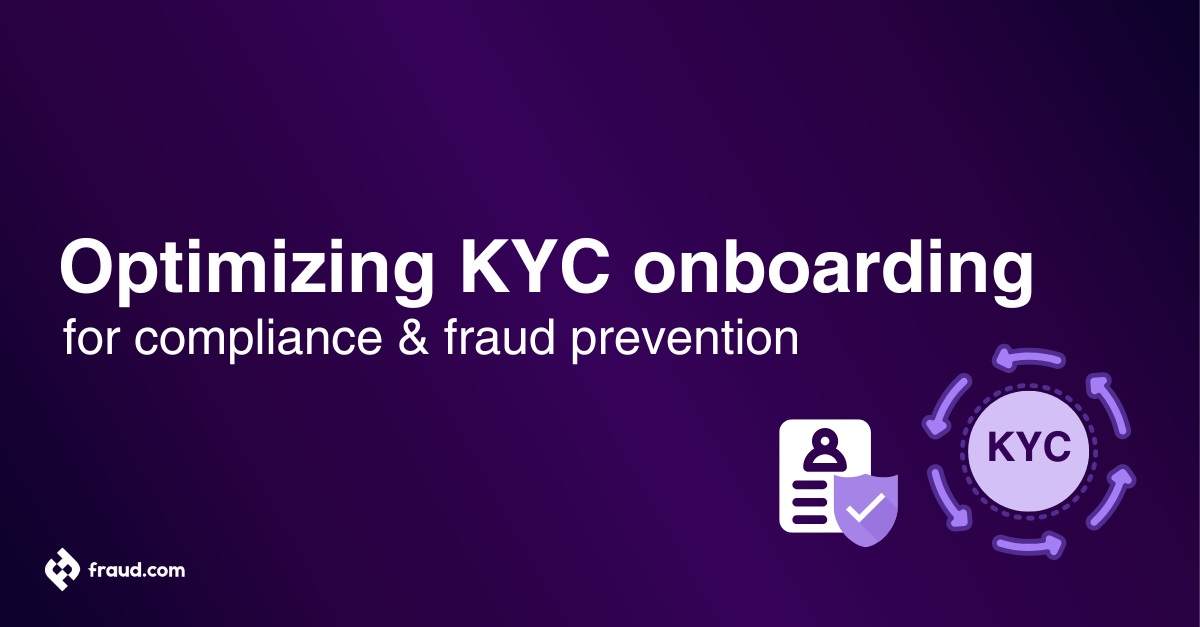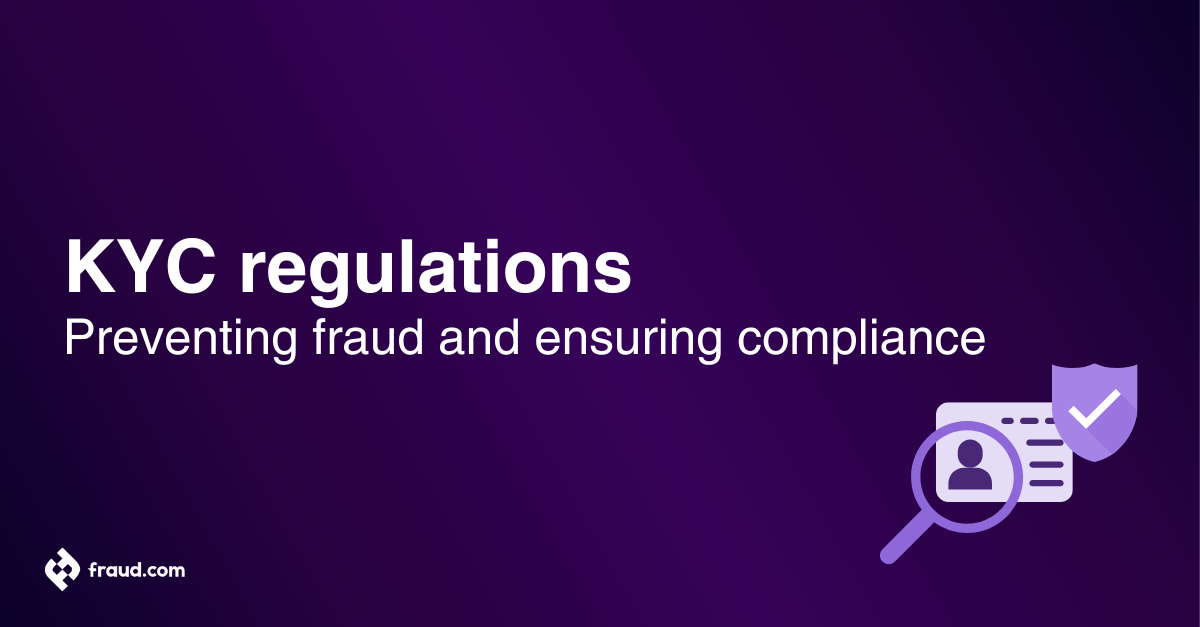With the advent of digital transformation, the way we authenticate our identity has changed, shifting from having to remember a string of characters and physically enter them to having passwordless authentication. You can now do things like open bank accounts, sign contracts, and access sensitive information without ever having to meet someone face-to-face.
With this new era of convenience comes new risks. Fraudsters are constantly adopting new methods to steal personal information and use it for their own gain. That’s why it’s more important than ever to make sure your identity is protected.
One way to do this is through passwordless authentication. Previously, passwords were one of the primary methods to secure information. With a strong password you could be reasonably confident that only those aware of the password would be able to access your data.
In this blog, we’ll explore the concept of passwordless authentication, its benefits, and how Udentify can help you take advantage of this growing trend.
Table of Contents
ToggleWhat is passwordless authentication?
Passwordless authentication is a method used in identity verification and authentication that doesn’t require a password or verification of the identity document. In other words, it’s a way to authenticate your identity without having to remember a string of characters.
The technology behind passwordless authentication varies depending on the provider. But generally, it relies on something you have, such as a phone, or something you are, like your fingerprint or face.
In recent years, the demand for passwordless authentication has grown exponentially. In 2021, the passwordless industry reached an impressive $12.79 billion. That figure will surpass $53 billion by 2030 as people become more aware of the risks associated with passwords and seek better ways to protect their information.
Is passwordless authentication safe?
With fraudsters becoming more sophisticated, passwords are no longer enough to protect your information. That’s where passwordless authentication comes in. It is a safe method to authenticate users and assess their authenticity. This method of authentication becomes safer when used with other techniques such as liveness detection.
This is because fraudsters may still spoof the user’s biometrics with things such as deepfakes and 3D masks, however if passwordless authentication is used with liveness detection, spoofing someones facial biometrics becomes impossible.
Passwordless authentication methods
There are a variety of passwordless authentication methods available, each with its own set of benefits and drawbacks. Here are some of the most popular:
One of the most used passwordless authentication methods is email. With this method, you receive a code via email that you must enter to log in. For instance, let’s say you want to log in to your bank account. You’d need to receive a code in your email address that you would then use to authenticate your identity and gain access to your account.
SMS
Another popular passwordless authentication method is SMS. With this method, you receive a code via text message that you must enter to log in. A good example of this is when you log in to a new Wi-Fi network and receive a text with a code to enter.
Biometrics
As fraud has increased, biometrics has become increasingly popular in recent years as a way to authenticate someone’s identity, with 41% of smartphone users now using biometrics to access their accounts and devices. An estimated 66% will do so by 2024.
With biometrics, your physical characteristics are used to verify and authenticate your identity. This includes anything from your fingerprint or iris to your face or voice. For instance, Apple’s iPhone uses Face ID, which uses facial recognition to unlock the device.
Having liveness detection on top on biometric verification and authentication is a great advantage as it is impossible for fraudsters to spoof someone’s live facial biometrics using techniques such as deepfakes or 3D masks.
Passwordless authentication techniques
The evolution of authentication methods has led to the emergence of passwordless techniques, offering heightened security and user convenience. Here, we explore various passwordless authentication strategies designed to fortify digital identity verification and authentication processes and safeguard sensitive information.
Biometric authentication: Biometric authentication leverages unique biological characteristics such as fingerprints for biometric fingerprint authentication, facial features for biometric facial recognition, or iris patterns to verify user identities. By utsing biometric data, organizations can establish a highly secure and user-friendly authentication process, mitigating the risks associated with password-based systems.
Multi-factor Authentication (MFA): Multi-Factor Authentication (MFA) combines two or more authentication factors, typically something the user knows (e.g., password), something they have (e.g., smartphone), and something they are (e.g., fingerprint), to validate user identities. MFA enhances security by adding layers of protection, reducing the likelihood of unauthorized access.
One-Time Passwords (OTP): One-time passwords are temporary codes generated for a single login session, often delivered via SMS, email, or authenticator applications. By eliminating the need for static passwords, OTPs bolster security against phishing attacks and credential theft, offering a dynamic approach to authentication.
Public Key Infrastructure (PKI): Public Key Infrastructure uses cryptographic keys to authenticate users and encrypt data transmissions securely. Through the use of digital certificates and private-public key pairs, PKI ensures secure communication channels, enabling passwordless authentication in various digital environments.
Device authentication: Device authentication validates user identities based on the characteristics and behavior of their devices, such as MAC addresses, IP addresses, and device fingerprints. By leveraging device attributes, organizations can establish a seamless and secure authentication experience, minimizing reliance on traditional password-based methods.
Incorporating passwordless authentication techniques into your security framework can significantly enhance protection against cyber threats while optimizing user experience. By embracing biometric authentication, MFA, OTPs, PKI, and device authentication, organizations can fortify their digital infrastructure and adapt to evolving security challenges in today’s interconnected landscape.
Passwordless authentication examples
- One-time codes: A one-time code is a unique code that is generated for each login attempt. This code can be sent via text message or email and is typically valid for a few minutes. A good example is when you log in to your online banking or crypto exchange wallet and receive a code to enter that is only valid for a few minutes.
- Push notifications: Push Notifications can be received through a pop up message which the user can click on. You receive a notification on your device that you must approve in order to log in. This is similar to how some apps allow you to log in using your Google or Facebook account. For instance, when you log in to the Udentify app, you receive a push notification on your phone that you must approve in order to access your account.
- Physical tokens: Physical tokens are another example of passwordless authentication. With this method, you use a physical device, such as a USB key or fob, to log in. This is similar to how you might use a physical token to access a company’s VPN.
Benefits of passwordless authentication
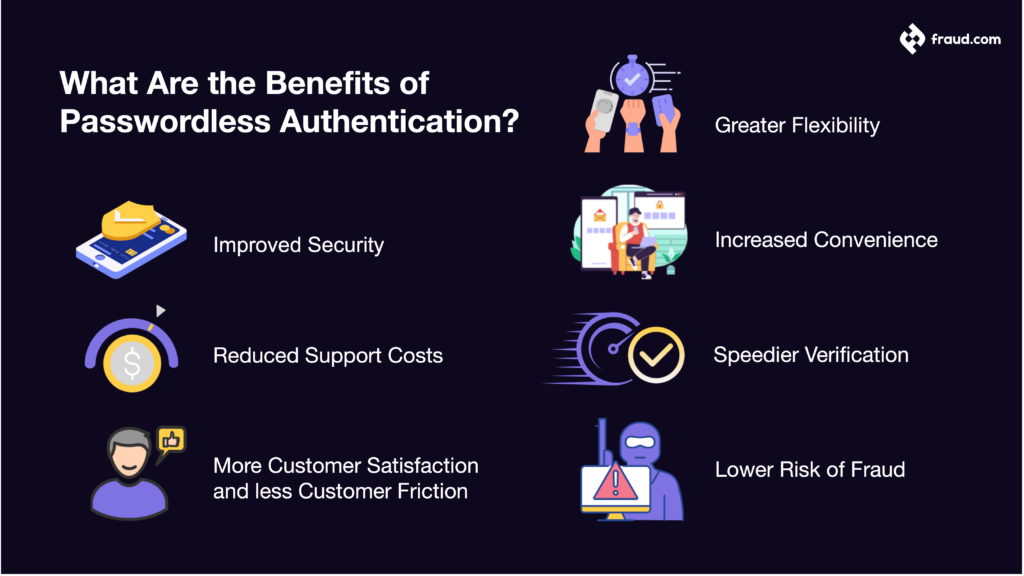
Passwords may have been a mainstay in the world of authentication for many years, but users now seem to be increasingly wary of them. 61% of users now say they’d prefer to try alternative methods of authentication. Shifting to passwordless authentication comes with several benefits, including:
- Improved security
Passwords are notoriously easy to hack, with 80% of all data breaches related to hacked passwords. Even strong passwords can be compromised if they’re reused across multiple accounts.
With passwordless authentication, there’s no need to worry about your passwords being hacked or stolen. This is because there’s no password to steal in the first place, instead personal biometrical characteristics are used to authenticate a user.
- Reduced support costs
Password resets are one of the most common support requests. In fact, In fact, over 40% of help desk tickets are related to password issues.
With passwordless authentication, there’s no need to worry about password reset requests. This is because there’s no password to reset. This can lead to significant savings for organisations that provide customer support.
- More customer satisfaction and less customer friction
Passwordless authentication is a much simpler and more user-friendly authentication experience. Users are less likely to get frustrated when they’re trying to log in, which can lead to a better overall user experience.
- Greater flexibility
With password-based authentication, you’re typically limited to using one password for all your accounts. With passwordless authentication, you have more options and can use different methods for different accounts.
For instance, you might use biometrics to log in to your phone and a one-time code to log in to your bank’s website. This allows you to tailor the authentication process to each individual account.
- Increased convenience
Passwords can be easy to forget, especially if you have a lot of them. In fact, 78% of people admit to forgetting passwords from time to time. This can lead to frustration when you’re trying to log in to an account and can’t remember your password.
With passwordless authentication, you don’t need to remember a password. This is because you can use another method, such as your face (facial biometrics) or a one-time code, to log in.
- Speedier verification
When using traditional password-based authentication, you need to enter your username and password, which can take some time, especially if you have forgotten them. With passwordless authentication, you can use a method such as biometrics by using your face, which is much faster, as easy as ‘your face is your password’.
In a world where we expect things to happen instantly, passwordless authentication can be a major benefit.
- Lower risk of fraud
Fraud cases, such as phishing which involves tricking users into disclosing their personal information, such as passwords is a very common way of having your data compromised. This is usually done by sending an email that looks like it’s from a legitimate source, such as a bank or online retailer.
With passwordless authentication, there’s no need to worry about phishing attacks. This is because you’re not relying on a password to log in. Instead, you’re using a method that’s more difficult to spoof, such as biometrics or a one-time code.
How to implement passwordless authentication?
Biometric authentication enhances verification and authentication processes, and it offers protection and user convenience in today’s digital landscape. Here’s a simple yet comprehensive guide to seamlessly integrate biometric authentication into your organization or application:
1. Assess your biometric authentication needs
Begin by evaluating your security requirements and identifying where biometric authentication can best serve your organization. Consider factors like security levels needed, user preferences, and the specific transactions or access points that will utilize biometric authentication.
2. Select suitable biometric modalities
Choose the biometric modalities that best align with your needs, such as fingerprint, facial recognition, or iris scanning. Consider factors like accuracy, speed, and user acceptance. Tailor your selection to match the context of your application or organization’s environment.
3. Ensure privacy and compliance
Prioritize privacy and compliance with relevant regulations such as GDPR or CCPA. Clearly communicate to users the data being collected, its purpose, and obtain their consent. Implement robust security measures to safeguard biometric data against unauthorized access or breaches.
4. Integrate Reliable Biometric Authentication Technology
Partner with a trusted biometric authentication provider to integrate their technology seamlessly into your existing systems. Ensure the solution supports features like liveness detection to prevent spoofing attempts and maintain the integrity of authentication processes.
5. Conduct a pilot test
Before full-scale implementation, conduct a pilot test with a selected group to evaluate performance and user acceptance. Address any issues like false rejections or acceptance rates, ensuring a smooth transition to biometric authentication for all users.
6. Provide user education and support
Educate users on how to use biometric authentication effectively and address any concerns they may have regarding privacy or security. Offer clear instructions and support resources to facilitate a seamless user experience.
7. Monitor, evaluate, and update
Continuously monitor the biometric authentication system for security threats and technical issues. Gather user feedback to refine and improve the system as needed. Stay informed about advancements in biometric technology and cybersecurity to keep your authentication solution up-to-date.
By following these steps, you can successfully implement biometric authentication, bolstering security and user experience across your digital platforms. Embrace the future of authentication with confidence, ensuring a secure and streamlined authentication process for all users.
Passwordless authentication requirements
Implementing passwordless authentication effectively requires careful consideration of several key requirements:
- Strong authentication methods: Adopt robust methods such as biometrics, one-time passwords (OTPs), or device authentication for secure user verification.
- Secure communication channels: Establish secure channels to prevent data interception or tampering during authentication.
- Comprehensive security measures: Implement encryption, multi-factor authentication, and intrusion detection systems to prevent unauthorized access.
- Data privacy compliance: Adhere to privacy regulations like GDPR and HIPAA to protect user data.
- User education and training: Provide training to users for smooth adoption of passwordless authentication methods.
- Integration with existing systems: Ensure seamless integration with current IT infrastructure and applications.
- Scalability and flexibility: Design solutions to accommodate growth and evolving security needs.
- Utilization of cryptographic keys: Passwordless authentication operates on cryptographic key pairs, similar to digital certificates, with a private key for unlocking and a public key acting as a padlock.
By addressing these requirements comprehensively, organizations can implement passwordless authentication solutions that enhance security, improve user experience, and mitigate the risks associated with traditional password-based authentication methods.
Passwordless authentication strategy
A passwordless authentication strategy, as outlined by Gartner, revolutionizes the traditional approach to user authentication by eliminating reliance on passwords. Instead, it leverages alternative methods such as biometrics, including facial recognition and fingerprints, hardware tokens such as smart card and USB keys, or mobile devices with push notifications.
Objectives:
- Enhanced security: Mitigate password-related risks such as phishing and credential stuffing.
- Improved user experience: Eliminate complex password requirements and reset processes.
- Cost savings: Reduce expenses associated with password management.
- Flexibility: Enable authentication from various devices and locations.
- Compliance: Adhere to regulatory and compliance requirements.
- Visibility and control: Gain insights into authentication events for better security posture.
Adoption trends:
Gartner predicts a significant uptick in passwordless adoption, with 60% of large and global enterprises and 90% of midsize enterprises projected to implement these methods in over half of their use cases by 2022, up from a mere 5% in 2018.
Challenges:
Despite its benefits, implementing a passwordless strategy poses several challenges:
- Integration with legacy systems
- User adoption hurdles
- Cost implications
- Security risks and privacy concerns
- Standards and interoperability issues
Benefits:
- Enhanced security: Minimize risks associated with password-related attacks.
- Improved user experience: Simplify authentication processes for users.
- Cost savings: Reduce expenses related to password management.
- Flexibility: Enable authentication from diverse devices and locations.
- Compliance adherence: Meet regulatory and compliance requirements.
- Visibility and control: Gain insights into authentication events for better security management.
Considerations:
While passwordless authentication offers substantial benefits, it may not be suitable for all scenarios:
- Cost constraints
- Compatibility issues with legacy systems
- Feasibility concerns with biometric authentication
- High-security environments requiring multiple factors
- Privacy considerations in certain jurisdictions
In summary, implementing a passwordless authentication strategy requires careful consideration of organizational objectives, challenges, and contextual factors to maximize its effectiveness and benefits.
Advantages and disadvantages of passwordless authentication
| Advantages | Disadvantages |
|---|---|
| Enhanced security: Passwordless authentication methods, such as biometric verification and device authentication, offer heightened security by reducing the reliance on easily compromised static passwords, thus mitigating the risk of unauthorized access and data breaches. | Dependency on biometric data: Biometric authentication methods rely on unique biological characteristics such as fingerprints and facial features, raising concerns regarding the security and privacy of biometric data stored and processed by authentication systems. |
| Improved user experience: By eliminating the need to remember and manage complex passwords, passwordless authentication enhances user experience, leading to increased user satisfaction and productivity. | Compatibility concerns: Some passwordless authentication methods may face compatibility issues with certain devices, operating systems, or applications, requiring organizations to ensure seamless integration across their digital infrastructure. |
| Mitigation of password-related risks: Passwordless authentication minimizes the risks associated with password-related vulnerabilities, including credential theft, brute-force attacks, and password reuse, thereby strengthening overall cybersecurity posture. | Potential privacy concerns: The collection and storage of biometric data for authentication purposes may raise privacy concerns among users, necessitating transparent data handling practices and robust privacy safeguards to maintain user trust. |
| Reduced risk of phishing attacks: With passwordless authentication techniques like one-time passwords (OTPs) and biometric verification, the risk of falling victim to phishing attacks, where users unwittingly divulge their credentials, is significantly reduced. | Adoption challenges: Despite the benefits, widespread adoption of passwordless authentication may face resistance from users accustomed to traditional password-based systems, requiring effective communication and user education initiatives to promote acceptance and adoption. |
| Simplified authentication processes: Passwordless authentication streamlines the login process for users, eliminating the need for manual entry and verification of passwords, thereby enhancing efficiency and reducing friction in user interactions. | Single point of failure: Passwordless authentication methods, particularly those reliant on biometric data or device authentication, may introduce a single point of failure, where a compromised biometric sample or device could lead to unauthorized access. |
| Compliance with regulatory requirements: Passwordless authentication methods often align with stringent regulatory requirements such as GDPR and HIPAA, ensuring compliance with data protection standards and avoiding potential fines or legal ramifications. | Implementation complexity: Implementing passwordless authentication solutions can be complex, requiring integration with existing IT infrastructure, deployment of specialized hardware or software, and comprehensive security measures to safeguard against potential vulnerabilities. |
| Flexibility in authentication methods: Passwordless authentication offers a diverse range of authentication methods, including biometrics, OTPs, and device authentication, allowing organizations to tailor their authentication mechanisms to suit their specific security needs and user preferences. | Risk of biometric spoofing: Biometric authentication methods are susceptible to spoofing attacks, where malicious actors attempt to mimic or manipulate biometric characteristics to gain unauthorized access, necessitating robust anti-spoofing measures to mitigate this risk. |
| Minimized password management overhead: By eliminating passwords from the authentication process, organizations can reduce the administrative overhead associated with password management, including password resets, account lockouts, and user support requests. | Potential reliance on third-party providers: Organizations implementing passwordless authentication solutions may need to rely on third-party providers for biometric recognition algorithms, OTP delivery services, or PKI infrastructure, introducing dependencies and potential security risks associated with external vendors. |
When considering the implementation of passwordless authentication, it’s essential to weigh these advantages and disadvantages to make informed decisions regarding cybersecurity strategies.
Problems with passwordless authentication
Despite its advantages, passwordless authentication presents several challenges and vulnerabilities:
- Dependency on biometric data: Biometric authentication methods rely on the collection and storage of sensitive biometric data, raising concerns regarding privacy, security, and potential misuse.
- Compatibility issues: Some passwordless authentication methods may face compatibility issues with older devices, operating systems, or applications, hindering seamless integration and adoption across diverse digital environments.
- User resistance and adoption challenges: Users may exhibit resistance towards adopting passwordless authentication methods, necessitating effective communication and user education strategies to encourage acceptance and usage.
- Risk of biometric spoofing: Biometric authentication methods are susceptible to spoofing attacks, where malicious actors attempt to mimic or manipulate biometric characteristics to gain unauthorized access, necessitating robust anti-spoofing measures to mitigate this risk.
- Security vulnerabilities: Even with passwordless authentication, malware, man-in-the-browser, and other attacks are possible. For example, hackers can install malware specifically designed to intercept one-time passcodes (OTPs) or insert trojans into web browsers to intercept shared data like one-time passcodes or magic links.
Addressing these challenges and vulnerabilities is essential to ensure the effectiveness and security of passwordless authentication implementations.
Passwordless authentication vs Multi-Factor Authentication
Another practical way to boost security measures is to implement multi-factor authentication (MFA). This is where you require users to provide more than one piece of information to verify their identity.
MFA is often seen as an alternative to passwordless authentication. However, the two methods are quite different. Here’s a quick overview of two key differences between passwordless authentication and MFA:
- Password requirement
A major difference between passwordless authentication and MFA is the password requirement. With passwordless authentication, no password is required. With MFA, you still need to enter a password as well as another piece of information, such as a one-time code that’s sent to your phone or email. Thus, there’s always the risk that your password could be compromised.
- Number of factors
Another key difference is the number of factors that are used. As the name suggests, multi-factor authentication uses multiple factors. This could be a hassle for users, as they need to use multiple pieces of information.
Passwordless authentication, on the other hand, only uses one factor. This makes it much simpler for users and reduces the risk of forgetting their login information.
In which business types can passwordless authentication be used?
Passwordless authentication can be used in a variety of business types. Here are some industries where passwordless authentication is commonly used:
- Banking
Banks are a highly attractive target for cybercriminals. This is because they hold a large amount of sensitive customer data. In 2017, 47% of all financial data breaches targeted banks.
As such, it’s important for banks to have robust security measures in place. One way to boost security is to use passwordless authentication for online banking. This way, customers can log in by simply using their face. This makes it much more difficult for hackers to impersonate a customer and gain access to their account
- Cryptocurrency exchanges
Cryptocurrencies, such as Bitcoin, are digital assets that use cryptography to secure transactions. They’re often stored in crypto exchange digital wallets.
Because cryptocurrencies are digital, they’re susceptible to cyber-attacks. In 2018, more than $1 billion worth of cryptocurrency was stolen from exchanges by fraudsters. That’s a massive loss for investors.
Password authentification can help to mitigate the risk of cyber-attacks. By using facial authentication, users can authenticate their identity without needing to remember a password. This makes it much more difficult for hackers to gain access to accounts and steal assets.
- Finance
With 90% of all hacks motivated by financial gain, it’s no surprise that finance is a prime target for cybercriminals. In recent years, we’ve seen a surge in attacks against banks and other financial institutions. Any institution that holds large amounts of money is at risk, and that includes not just banks but also hedge funds and credit card companies. Adopting passwordless authentication can help boost your defences as an institution.
- Insurance
The insurance industry is no stranger to data breaches. In 2017, Equifax, one of the three largest credit reporting agencies in the US, announced a data breach that affected 143 million people. The hackers accessed names, Social Security numbers, dates of birth, addresses, and driver’s license numbers. Since then, we’ve seen a string of attacks against several insurance companies.
In each of these cases, the hackers were able to gain access to sensitive customer information because the companies were using the username and password authentication. If these companies had adopted passwordless authentication, it’s likely that the breaches would not have been as severe.
Passwordless authentication FAQ
| Question | Answer |
|---|---|
| What is passwordless authentication? | Passwordless authentication is an approach to user verification that eliminates the need for passwords as the primary authentication method. Instead, it relies on alternative methods such as biometrics, hardware tokens, or mobile devices for verifying user identities. |
| Why is passwordless authentication gaining popularity? | Passwordless authentication is gaining popularity due to its ability to enhance security, improve user experience, and mitigate risks associated with traditional password-based authentication methods, such as phishing and credential stuffing attacks. It also aligns with regulatory requirements and enables organizations to modernize their authentication systems. |
| What are some examples of passwordless authentication methods? | Examples of passwordless authentication methods include biometrics (e.g., facial recognition, fingerprints), hardware tokens (e.g., smart cards, USB keys), and mobile devices (e.g., push notifications). These methods eliminate the need for users to remember complex passwords and streamline the authentication process. |
| How does passwordless authentication improve security? | Passwordless authentication improves security by reducing the reliance on easily compromised static passwords. Alternative authentication methods such as biometrics or hardware tokens offer stronger verification mechanisms, mitigating the risk of password-related attacks such as phishing, credential stuffing, and password reuse. |
| What challenges are associated with implementing passwordless authentication? | Implementing passwordless authentication may pose challenges such as integration with legacy systems, user adoption hurdles, cost implications, security risks, privacy concerns, and standards and interoperability issues. Overcoming these challenges requires careful planning, investment in suitable solutions, and adherence to best practices. |
| Is passwordless authentication suitable for all organizations? | While passwordless authentication offers significant benefits, its suitability depends on various factors such as organizational requirements, budget constraints, compatibility with existing systems, and user preferences. Some organizations may find passwordless authentication more feasible and beneficial than others, depending on their specific needs and circumstances. |
| How can organizations prepare for the transition to passwordless authentication? | Organizations can prepare for the transition to passwordless authentication by conducting thorough assessments of their current authentication systems, identifying suitable passwordless authentication methods, addressing technical and operational challenges, providing user education and training, and ensuring compliance with regulatory requirements. |
Implementing passwordless authentication requires careful consideration of various factors, and organizations should assess their specific requirements and readiness before embarking on this transition.
Our passwordless authentication solution – Udentify
As more internet users become aware of the dangers of using passwords, they are increasingly looking for alternatives. Organisations are also constantly improving their security measures to decrease fraud and offer more effective and faster services in order to keep their customer satisfied.
That’s where Udentify comes in. This passwordless verification and authentication platform reveals the real identity of a user, client, employee, or business partner in seconds.
Udentify is more than just a passwordless authentication system. It’s also a user onboarding platform. With its AI-powered facial recognition system and liveness detection, Udentify can verify a user’s identity quickly. That means you can quickly and easily onboard new users without having to worry about the security of their personal information.
Udentify is also an age verification platform. This is especially important for businesses that sell age-restricted products, such as alcohol, tobacco, and gambling. With Udentify, you can quickly and easily verify a user’s age without having to collect sensitive information like their date of birth.
There are six layers of security, ensuring that your system is impossible to breach. What’s more, Udentify seamlessly integrates with your current systems, so you don’t need to make any changes to the way you operate.
Udentify is perfect for a wide variety of industries, including banking, healthcare, crypto exchanges, e-commerce, gaming, and online dating. These businesses require especially high levels of security.
Boost Your Digital Security with Passwordless Authentication
As we become increasingly reliant on digital devices and services, the need for strong authentication methods becomes more critical. Passwords are no longer enough to protect our accounts and data. Passwordless authentication is a more secure alternative that is becoming increasingly popular.
Udentify is at the forefront of this trend, offering a passwordless authentication system that is secure, user-friendly, and easy to integrate. Get started with the platform today and enter the era of seamless identity authentication and reliable fraud prevention.

